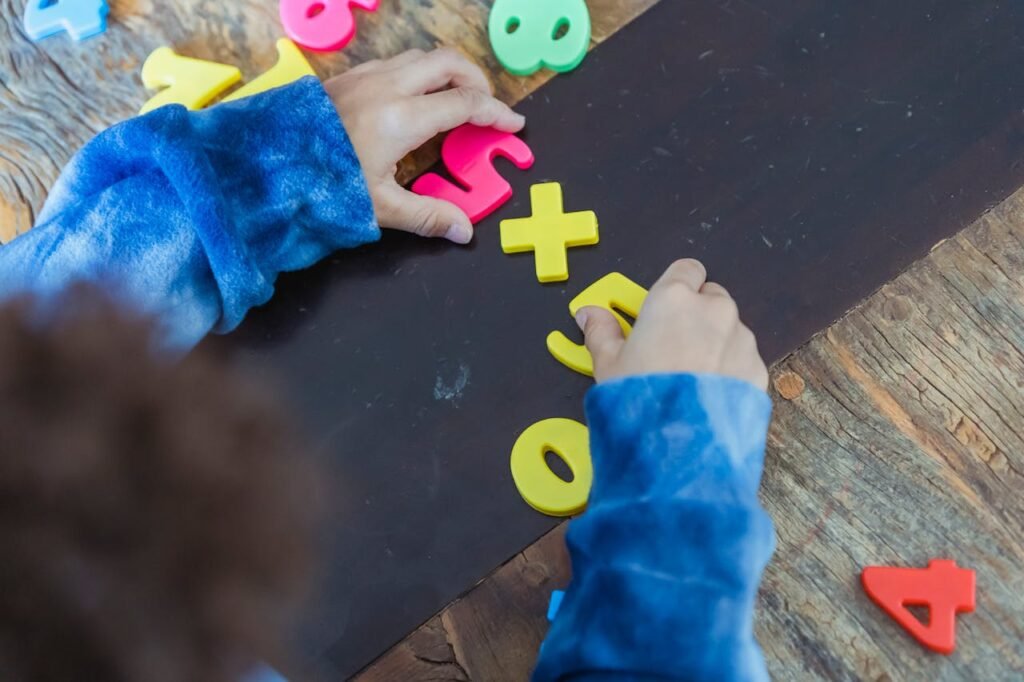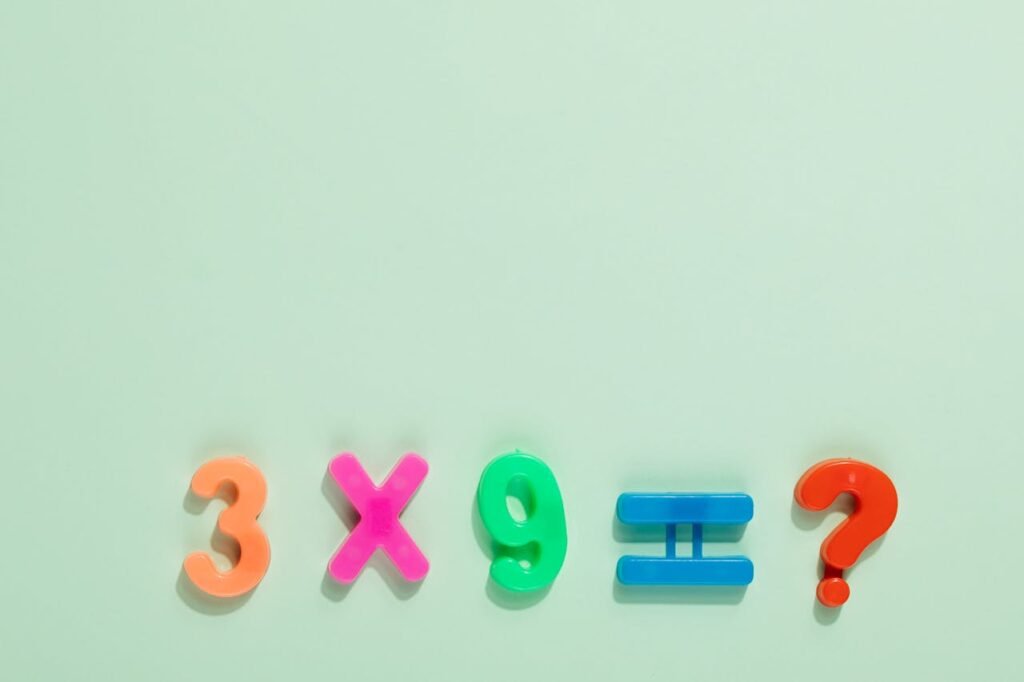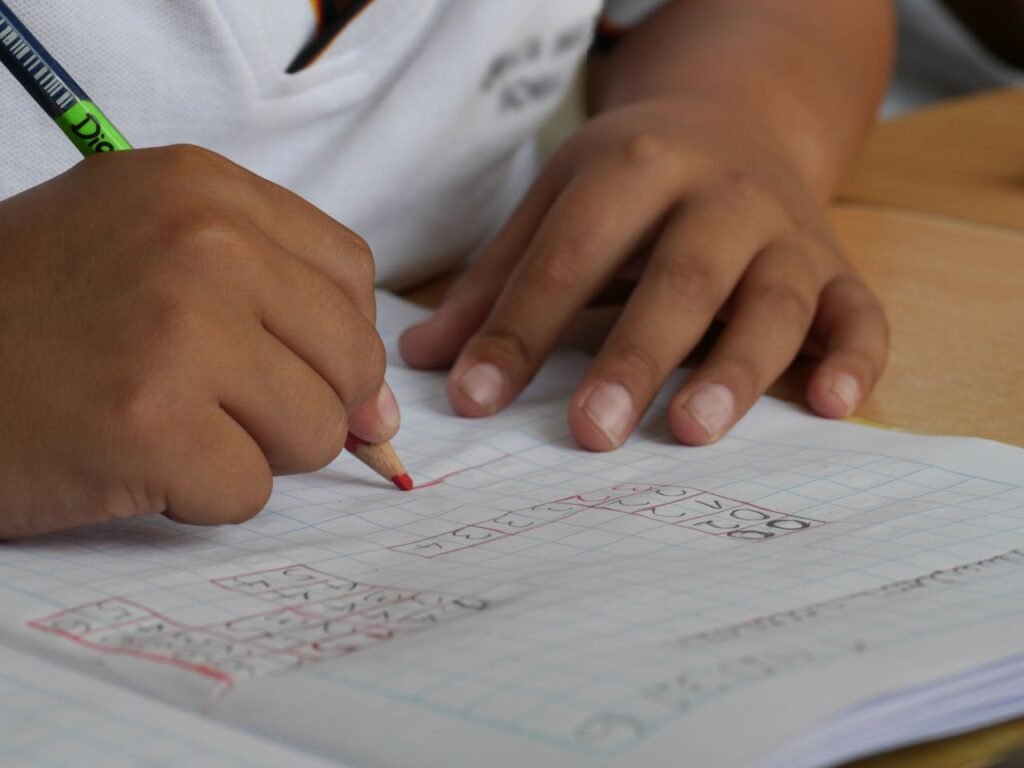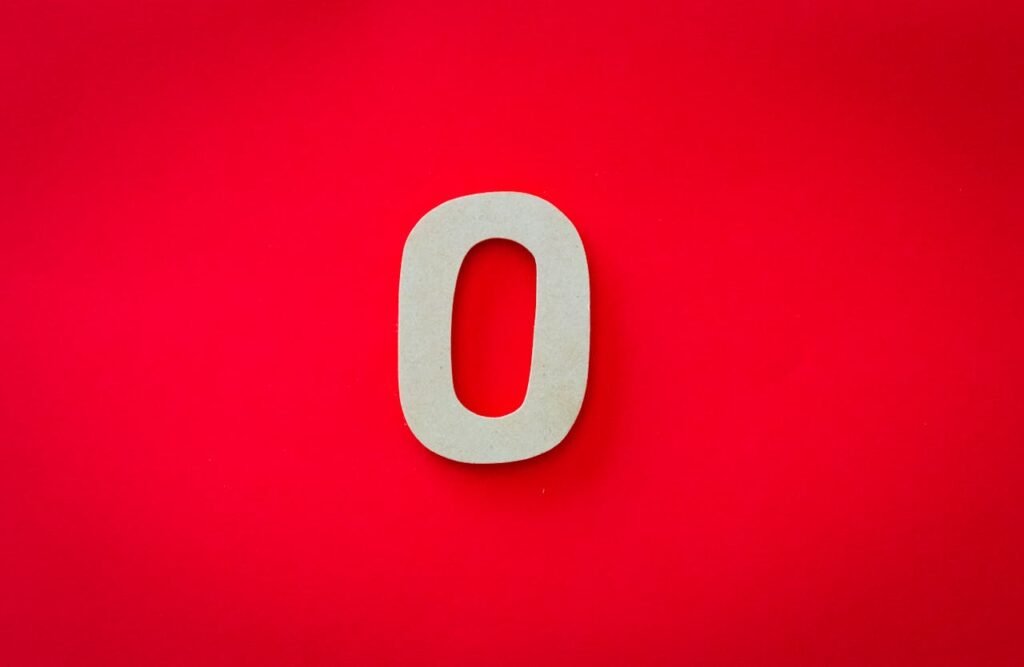Does learning multiplication tables feel hard or boring? You’re not alone. Lots of kids feel stuck when they hear the word “times tables.” All those numbers. All that memorizing. It can feel like too much.
But here’s a secret: multiplication tables don’t have to be scary. And they don’t have to be boring either. When you learn them the right way—step by step, with fun tricks and real understanding—they actually become easy. And yes, even fun!
At Debsie, we’ve helped thousands of students around the world go from “I can’t do this” to “This is easy!”—just by showing them the right way to learn. In this article, we’ll guide you through simple ways to learn multiplication tables, from the very beginning. No rush. No pressure. Just clear methods that really stick.
Let’s start this journey together. You’ll be surprised at how quickly things start to click.
What Is Multiplication, Really?
Before we jump into tables, let’s make sure you really understand what multiplication means. When you know the “why,” the “how” becomes much easier.
Multiplication is just a fast way to add the same number over and over. That’s it.
So, if you know that:
- 2 + 2 + 2 = 6
Then you also know that: - 2 × 3 = 6
It’s saying, “Take 2, three times.”
That’s what every multiplication table is really doing. It’s not magic. It’s just repeated adding. Once your brain sees it that way, it starts to feel simple.
Let’s Use Real Life
Imagine you have 4 bags of marbles. Each bag has 5 marbles inside. How many marbles do you have in total?
You could add it up: 5 + 5 + 5 + 5 = 20
Or you can multiply: 4 × 5 = 20
See how much quicker that is? That’s why we use multiplication—to save time and think smarter.
At Debsie, we use real-life stories like this all the time. We teach multiplication through snacks, shopping, LEGO blocks, and anything else your child loves. This helps them understand multiplication as something real, not just something on a chart.
The Right Time to Start

So, when should kids learn multiplication tables?
We’ve found that most children are ready to start around age 6 or 7, once they’ve become comfortable with adding and subtracting. But it’s not about age—it’s about understanding.
Before starting tables, your child should:
- Know how to count forward and backward
- Understand what “groups” mean
- Be able to add the same number a few times
If those basics are there, they’re ready to begin.
At Debsie, we never rush. Some children need more time, and that’s okay. We focus on building deep understanding first, so that learning the tables feels smooth, not stressful.
Start With the Easy Tables First
Here’s where we make things really fun.
Most children think they have to memorize the whole 1 to 12 times table all at once. That’s overwhelming. So we don’t start that way. Instead, we teach them to start with what they already know.
The easiest tables to begin with are the 2s, 5s, and 10s.
Why? Because:
- 2s are just doubling.
- 5s always end in 0 or 5.
- 10s just add a zero at the end.
We call these the “confidence tables.” Kids learn them fast—and feel smart right away.
Once these are strong, we gently move to 3s, 4s, and others—one small step at a time.
Patterns That Make Multiplication Easy
One of the best-kept secrets about multiplication is this: tables are full of patterns. And when kids notice those patterns, they don’t have to “memorize” everything—they can understand it instead.
Let’s look at the 5 times table. It goes like this:
5, 10, 15, 20, 25, 30…
Notice anything? Every number ends in a 0 or a 5. That pattern helps your brain predict what comes next. It also helps you check if an answer “feels right.”
Now look at the 9 times table. The pattern is even cooler:
- 9 × 1 = 9
- 9 × 2 = 18
- 9 × 3 = 27
- 9 × 4 = 36
Look at the digits in the answers:
9, 1+8=9, 2+7=9, 3+6=9…
Each one adds up to 9!
That’s a pattern—and it makes the 9s feel less scary. You’re not guessing anymore. You’re using math logic.
At Debsie, we help kids find and play with these patterns through number games, music, and visual puzzles. The more they “see” inside the numbers, the more fun it becomes.
Use Your Fingers (Yes, Really!)
Some people think using your fingers in math is bad. Not at Debsie. We love it—especially for younger learners.
There’s even a trick for learning the 9 times table using your fingers.
Hold out both hands in front of you. Let’s say you want to find 9 × 4.
Count over to the fourth finger from the left. Now fold it down. You’ll have 3 fingers up on the left side, and 6 fingers up on the right.
That’s 36 → so 9 × 4 = 36.
It works for every number from 1 to 10! Kids love this trick. It makes them smile—and when they smile, they remember.
We use these kinds of body-based learning tools in our classes to help children connect movement with memory. It’s fun. It works. And it builds confidence fast.
One Fact Can Teach Two (Or More)
Here’s another trick: multiplication is a two-way street.
If you know 4 × 6 = 24, then you also know 6 × 4 = 24.
That means you only need to learn half the table!
And it doesn’t stop there. If you know 6 × 4 = 24, you also know how to divide:
24 ÷ 4 = 6
24 ÷ 6 = 4
Every multiplication fact unlocks three other math facts. That’s amazing, right?
At Debsie, we teach this as “one fact, four ways.” Kids feel proud when they see how much power one little math fact gives them.
Turn Practice Into Play

Let’s be honest—just staring at a chart or repeating “4 times 5 is 20” over and over isn’t fun. And if learning isn’t fun, it doesn’t stick. That’s why at Debsie, we turn practice into play. We find ways to help children want to try again, not just feel like they have to.
Make It a Game
Instead of flashcards, try this: hide multiplication questions around the house and let your child go on a math treasure hunt. Every right answer gets them a clue to the next one. Or turn it into a board game where each correct answer lets them move ahead.
Even something simple like “beat your own score” becomes a fun challenge. Kids love setting new records—especially when the challenge feels possible and they’re getting better each time.
Use Music and Rhythm
Multiplication facts can feel like a song. And when they sound like a song, they’re easier to remember. That’s why we teach multiplication with rhymes, claps, and silly voices.
Want to learn the 3s table? Try chanting it with a beat:
3, 6, 9, 12, 15, 18, 21, 24, 27, 30
Clap every third number. Or stomp, or tap a pencil. When you bring rhythm into it, learning becomes active—and that helps memory grow.
We even use songs and movement videos in Debsie classes so kids can learn math with their whole body, not just their brain. And guess what? They remember it longer, too.
Make It Visual
Some children are visual learners—they remember what they see. For them, we use colorful multiplication grids, patterns, and arrays to help connect numbers in a visual way.
Want to teach 4 × 3? Draw 4 rows of 3 dots. Count them together. Now you’ve seen the answer.
Want to learn square numbers? Use building blocks or draw squares. 3 × 3 isn’t just 9 anymore—it’s a perfect little shape.
When children connect the numbers to things they can touch and see, the facts feel real. They become more than just facts—they become something they own.
Review, Don’t Cram
One of the biggest reasons kids forget multiplication tables is because they learn them too fast. They try to do too much at once, and nothing sticks.
That’s why we always say: go slow and steady. Learn one table at a time. Practice a little every day. Don’t rush.
At Debsie, we teach children to review what they already know before learning something new. We call it “spiral learning.” It keeps the knowledge fresh without stress. Kids feel like they’re getting stronger—not starting over.
What If My Child Keeps Forgetting?
It’s normal. Really. Many kids forget multiplication facts, even after they’ve learned them. That doesn’t mean they’re bad at math—it just means the facts didn’t stick yet. And that’s okay.
The key is not to panic. At Debsie, we’ve worked with thousands of children, and one thing is clear: confidence grows from kindness, not pressure.
If your child forgets 7 × 8, you can say:
“It’s okay, let’s work it out together. Can we break it down into something we do know?”
They might remember 7 × 7 = 49
So then 7 × 8 = 49 + 7 = 56
That’s solving, not guessing. That’s math thinking.
When children are taught how to think, not just what to remember, they stop feeling afraid. They become math detectives—looking for clues, trying things out, and learning without even realizing it.
Real-World Multiplication

Multiplication doesn’t just live inside a math book or show up on a test. It’s everywhere—in your kitchen, your backyard, your shopping trips, even in your hobbies. And when children see multiplication working in the real world, it clicks in a whole new way.
That’s why at Debsie, we bring multiplication out of the classroom and into the everyday. We help kids see that multiplication is not just numbers—it’s how the world works. It’s how we organize, build, share, and plan. And when children see it that way, they don’t just memorize—they understand.
Baking and Cooking
One of the easiest places to teach real-world multiplication is in the kitchen.
Let’s say a recipe makes 4 muffins, and your child wants to make 3 batches. That’s 4 × 3.
Or maybe the recipe calls for 2 eggs per cake, and you’re baking 5 cakes. That’s 2 × 5.
It’s not just math—it’s math with purpose.
You can ask:
- “If each cookie sheet holds 6 cookies, how many cookies do we get with 4 sheets?”
- “The recipe says ½ cup of milk per pancake batch. What if we’re making 2 batches?”
Even working with fractions becomes easier when it’s tied to something yummy. Kids remember better when the learning is hands-on and delicious.
Shopping and Money Math
Shopping is another fantastic way to practice multiplication in a real setting. From the moment you pick up an item to the moment you pay, there’s multiplication in play.
Your child might notice:
- “These pens are $3 each. If we get 4, that’s 3 × 4 = $12.”
- “This box has 10 juice packs. If we buy 3 boxes, how many juice packs do we have?”
At Debsie, we often create pretend shopping games where children practice multiplying prices, counting items, and working with totals and change. It’s one of the best ways to connect numbers to value.
When children realize that multiplication helps them make smart money decisions, they start using it automatically—even outside of math time.
Around the House
Multiplication pops up in all kinds of everyday tasks at home.
Folding laundry?
- “We folded 6 pairs of socks. That’s 6 × 2 = 12 socks.”
Setting up chairs for dinner?
- “We need 5 chairs at each table, and we’re using 3 tables. That’s 5 × 3 = 15.”
Packing snacks?
- “Each lunchbox gets 2 crackers, and we have 6 lunchboxes. How many crackers do we need?”
These are natural learning moments—quiet, quick, and powerful.
When kids do this kind of math in their head and see how it helps real situations, they feel smart. They feel helpful. And most of all, they feel like math is something they can actually use.
Make Multiplication Part of the Day

One of the best ways to help multiplication really stick is to stop treating it like a separate “math time” and instead, weave it into daily life. When kids see multiplication as something useful—not just something for school—they start to use it on their own, without even thinking.
At Debsie, we call this “math in motion.” It’s about building math skills in simple, everyday ways—without turning everything into a lesson. Just quick, playful moments that help children think in numbers without stress.
At Mealtimes
Mealtimes are perfect for mental math. You can casually ask:
- “We have 4 people and 3 pancakes each. How many pancakes do we need?”
- “Each glass holds 2 scoops of juice. We need 5 glasses. How many scoops is that?”
There’s no pressure. No test. Just a soft, daily rhythm of multiplication.
Even setting the table becomes a math moment:
- “If each person gets 1 fork, 1 spoon, and 1 knife, how many pieces do we need for 6 people?”
That’s 6 × 3—done mentally, with a purpose.
In the Car or on Walks
Turn travel time into math time—without the worksheets. Try this:
- “We passed 4 red cars. If each car has 4 wheels, how many wheels is that?”
- “We walked past 3 houses. Each house has 2 flower pots. How many pots in total?”
These simple questions help kids start to see multiplication in the world around them. And when they start noticing it on their own, it means they’re beginning to really understand it.
While Playing
Whether your child is building with blocks, lining up toys, or playing board games, multiplication is often hiding in plain sight.
- “You made 5 towers, and each one has 6 blocks. How many blocks did you use?”
- “We have 3 teams of 4 players. How many players are there in total?”
This turns playtime into practice time—without changing the mood. No drills. No memorizing. Just real thinking, happening during fun.
At Debsie, we encourage parents to join in and play too. When kids see math as something they can use, not just something to memorize, their confidence begins to bloom.
Keep It Light
The key to this method is gentleness. You’re not testing your child. You’re just talking. You’re helping them practice thinking in numbers in a way that feels normal, easy, and even fun.
Over time, they’ll stop hesitating when they hear a math problem. They’ll jump in with a smile and say, “Wait—I think I know this!”
Because now, multiplication isn’t just something they “study.” It’s something they live.
How Debsie Helps Kids Master Multiplication (and Actually Enjoy It)

Most kids don’t struggle with multiplication because they’re “bad at math.” They struggle because they’re taught in ways that don’t match how they think, feel, or learn. That’s why at Debsie, we do things differently. We don’t just teach multiplication—we help children build a real relationship with numbers. One that makes them feel smart, excited, and in control.
We Start With Understanding, Not Memorizing
At Debsie, we never begin with charts or drills. We begin with meaning.
We help children understand what multiplication really is before they ever see a table. That way, when they start learning the facts, they know what they’re doing—and why. This gives them a strong foundation that lasts, not just short-term memory that fades.
Before a child even sees 6 × 4 = 24, we ask questions like:
- “Can we build 6 groups of 4 LEGO pieces?”
- “What does it mean to double something? What if we double it again?”
- “How many cookies would we have if each tray holds 4 and we bake 6 trays?”
This kind of learning feels real. And when it’s real, it sticks.
We Match the Method to the Child
Every child learns differently. Some need to see patterns. Some need to move their bodies. Some love to sing or talk it out. That’s why our Debsie teachers use flexible, multi-sensory techniques that meet kids where they are.
We don’t say, “Here’s how everyone must learn.” We ask, “What works for you?”
Then we build from there.
With visual learners, we use color-coded grids and arrays.
With active learners, we build skip-counting games and clapping patterns.
With storytellers, we turn times tables into characters with missions and personalities.
And the result? Kids who feel seen, heard, and supported—and start to love learning again.
We Turn Practice Into Play
Repetition is part of learning multiplication, but we make it joyful. At Debsie, we turn practice into a game, a challenge, or a quest.
- Instead of flashcards, we play math treasure hunts.
- Instead of worksheets, we create story-based puzzles.
- Instead of silent drills, we use music, timers, and laughter.
Kids feel like they’re playing. But secretly? They’re getting faster, stronger, and more confident with every session.
We Celebrate Progress—Not Perfection
At Debsie, we believe in cheering for every win. Whether it’s a first breakthrough with the 2s table or finally cracking the 8s, we recognize effort as much as results. Kids hear us say things like:
- “You worked through it, even when it felt tricky—amazing!”
- “You noticed a pattern all by yourself—that’s smart thinking!”
- “Look how much faster you got this week—that’s real progress!”
These small moments build big confidence.
Final Thoughts: Mastering Multiplication With Confidence and Joy
Multiplication doesn’t have to feel like a mountain. It doesn’t have to be hard, scary, or filled with pressure. With the right approach—one that’s kind, simple, and built around how your child learns—it can actually feel fun. Even exciting.
At Debsie, we don’t just teach times tables. We help children discover the joy of thinking clearly and solving problems. We use rhythm, real-life stories, movement, visuals, and games to make sure every child finds their way in. Because when learning fits the child, learning sticks.
And when it sticks, everything else becomes easier:
Fractions. Division. Word problems. Confidence.
So if your child is struggling with multiplication, or just getting started, don’t worry. There’s a better way. A softer way. A smarter way. And we’d love to help you find it.
👉 Try a free Debsie class today and watch your child go from “I don’t get it” to “I’ve got this!”
👉 Explore our full course library for ages 5–18 across all subjects—from math and science to history and beyond.
Read Next:



